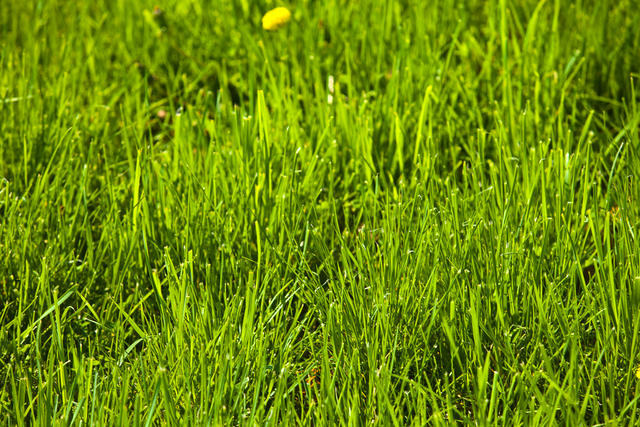Lawns likely to recover from drought
Lawns likely to recover from drought

This summer’s drought has not only been tough on agricultural producers, but it has taken a toll on many homeowner’s lawns. While timely rains in July helped grasses in central and eastern areas of the state rebound, a lack of rain in Western Kentucky is keeping lawns parched.
Recovery will depend on the type of grass that is planted in a lawn, said Gregg Munshaw, extension turf specialist with the University of Kentucky College of Agriculture. One of the most common grasses seeded in lawns across the state is tall fescue, a cool-season grass.
“Because of its deep root system, tall fescue will remain green and grow longer into a drought than Kentucky bluegrass, which goes dormant during hot and dry periods,” Munshaw said. “But tall fescue is not as drought tolerant as many warm-season grasses. It can only take so much and will struggle once all the moisture in the soil is gone.”
Homeowners can do a simple test to determine if their grass is going to survive the drought, he said. Individuals can take a sample of their grass and its root system from their lawns and put it in an area, such as a garage, where the plant isn’t in direct sunlight and give it water. If the grass is still alive, individuals should start to see green shoots returning within a week.
“Assuming the lawn’s not dead, timely rains and cooler temperatures this fall will cause the lawns to rebound,” he said.
Those who have dead lawns will want to reseed their grass. Usually mid-August through mid-October is the best time to do so with a cool-season grass. If their lawn hasn’t had a soil test in several years, individuals should have their soils tested to make sure they aren’t lacking in any minerals needed for adequate stand establishment. Soil samples can be taken to the local office of the UK Cooperative Extension Service. When seeding, homeowners should till their lawns to make sure they have good seed-to-soil contact. Adequate moisture is also imperative to successful grass establishment.
Additionally, homeowners across the state may be noticing more warm-season annual grassy weeds, such as goosegrass and crabgrass, out-competing their cool-season lawns as result of the drought.
“These annual weeds will die this fall but will set seeds that can germinate next spring,” Munshaw said. “Homeowners should not spray herbicides on their drought-stressed lawns now because they are already stressed. Those that do have a lot of grassy weeds present now may want to consider putting out a pre-emergent herbicide next spring.”
When the state goes through hot, dry summers, homeowners may want to take a proactive step to protecting their lawns from drought next spring by raising their mower height.
“Raising their mower height even a little will make their lawn healthier with a deeper root system to better withstand heat and drought,” Munshaw said.
Extension Weather

